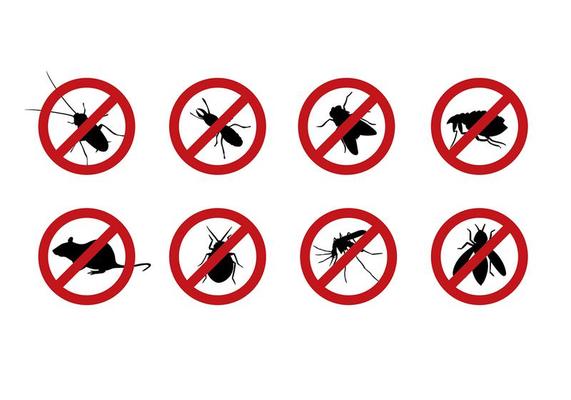Reliable A1 Bed Bug Exterminator Charlotte - Remove Bed Bugs Fast
Reliable A1 Bed Bug Exterminator Charlotte - Remove Bed Bugs Fast
Blog Article
Bed Insect Therapy Breakdown: Comparing Chemical Vs. Non-Chemical Solutions
In the world of bug control, particularly when managing the consistent concern of bed pests, the option in between chemical and non-chemical therapy services can be a critical one. Both techniques supply distinctive advantages and disadvantages, affecting variables such as effectiveness, safety factors to consider, and general cost. By checking out the nuanced information of each technique, a clearer understanding of which course to pursue in attending to a bed insect invasion can be acquired.
Effectiveness of Chemical Therapies
Chemical treatments for bed bug problems have actually been commonly acknowledged for their quick and powerful efficacy in eradicating these bugs. When taking into consideration the performance of chemical therapies, it is important to recognize that they can give a fast and complete remedy to a bed insect problem.
Moreover, chemical therapies have the benefit of supplying recurring impacts, meaning that they can remain to get rid of bed pests also after the preliminary application. This residual activity is particularly helpful in combating any type of potential re-infestations. In addition, the rapid activity of chemical therapies can bring alleviation to people dealing with serious bed insect infestations, enabling them to reclaim control of their living rooms swiftly.
Safety Interest In Chemical Solutions
One essential facet that needs mindful consideration when utilizing chemical options for bed pest therapy is making certain the security of owners and the setting. Direct exposure to specific chemicals made use of in bed bug therapies can lead to breathing issues, skin inflammation, or various other adverse responses, specifically in people with pre-existing problems or level of sensitivities.
In addition, the ecological effect of chemical remedies is another considerable factor to consider. Some chemicals utilized in bed pest therapies might be harmful to valuable pests, wildlife, and ecological communities if they leach right into the soil or water supply. It is necessary to use chemical therapies judiciously, adhering to safety standards, and thinking about much less harmful options to minimize these threats and make sure the reliable and safe administration of bed bug invasions.
Advantages of Non-Chemical Approaches
Taking into consideration the potential safety worries and environmental effect related to chemical services for bed pest therapy, checking out non-chemical techniques provides a promising alternative with a number of unique benefits. Non-chemical methods supply a much safer choice for families, particularly those with individuals, children, or animals conscious severe chemicals. These approaches eliminate the risks of direct exposure to toxic materials, lowering the capacity for unfavorable health and wellness results. Moreover, non-chemical treatments are eco pleasant, as they do not contribute to air or water pollution, making them a lasting selection for parasite control.
In addition, non-chemical options can be efficient in targeting bed insects, consisting of hard-to-reach locations where chemical therapies may not penetrate - A1 pest control services charlotte. Techniques such as warmth therapy, vacuuming, steam cleansing, and bed mattress encasements give extensive elimination without the usage of hazardous pest control phoenix chemicals.
Limitations of Non-Chemical Treatments

Additionally, non-chemical therapies often call for several check out here applications to attain successful obliteration. This can be lengthy and may not always assure full removal of all bed bugs and their eggs, especially in hard-to-reach or hidden areas.
Additionally, the success of non-chemical therapies greatly counts on appropriate application and thoroughness, which can be testing for individuals without specialist competence. Inadequate application of non-chemical methods may lead to insufficient removal, bring about relentless invasions and the demand for extra therapies.
Consequently, while non-chemical therapies have their advantages, it is essential to recognize these limitations and consider them when establishing the most effective strategy for managing bed pest infestations.
Expense Comparison: Chemical Vs. Non-Chemical Options
Provided the restrictions related to non-chemical therapies, an important facet to review in the context of bed insect management is the cost comparison between chemical and non-chemical choices. Chemical therapies normally entail the application of insecticides by experts, which can vary from $250 to $900 per space, depending upon the intensity of the problem and the dimension of the area to be dealt with. On the other hand, non-chemical therapies like warm treatment or steam can be much more expensive, with prices varying from $1,000 to $6,000 for an entire home. While the first cost of chemical treatments may appear reduced, multiple treatments may be required to totally remove the infestation, possibly raising the overall cost. On the various other hand, non-chemical choices may provide a more environmentally friendly and lasting option, although they can be cost-prohibitive for some individuals. Ultimately, when taking into consideration the expense of bed bug treatment options, it is crucial to evaluate the upfront expenditures versus the efficiency and long-lasting sustainability of the picked method.
Conclusion

Thinking about the potential security worries and environmental effect associated with chemical remedies for bed bug treatment, checking out non-chemical approaches presents an appealing choice with a number of distinctive benefits.Provided the restrictions linked with non-chemical treatments, a crucial facet to evaluate in the context of bed insect monitoring is the price comparison between chemical and non-chemical choices. In contrast, the original source non-chemical therapies like heat treatment or vapor can be much more costly, with expenses ranging from $1,000 to $6,000 for an entire home. While the first cost of chemical therapies may appear lower, numerous treatments might be required to completely remove the infestation, potentially boosting the overall cost.In final thought, when contrasting chemical and non-chemical bed insect treatment options, it is crucial to consider effectiveness, security, advantages, constraints, and expense.
Report this page